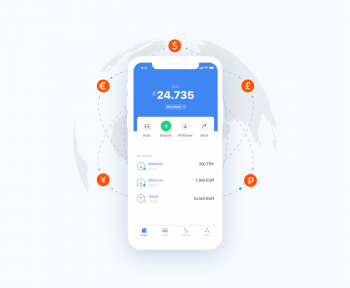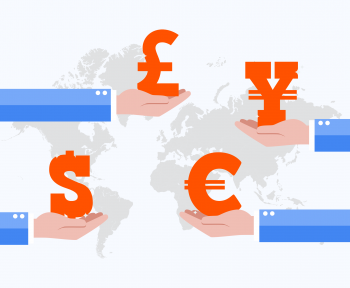With technological advancements, now we are able to send and receive money with just one click. Cross border payments are the financial arteries of our interconnected world. At a time when our planet is more connected than ever, these transactions have become the lifeblood of international trade, personal connections, and global commerce. They are the channels through which money moves across borders, linking businesses, families, and individuals over great distances.
In this article, we will delve into why cross border payments are so crucial in our modern global economy. We will also examine various cross-border payment methods across borders, revealing the best cross border payment method available in today’s ever-evolving financial landscape. Also we will talk about possible challenges that may arise from external factors while using cross border payments. From facilitating international trade and e-commerce to supporting loved ones overseas, cross border payments play a pivotal role in the diverse networks that shape our modern world.
Thanks to the fast development of internet networks and fintech companies across the world, cross border payment methods have seen significant innovations that have reduced transfer delays and costs. Whether you are business owner or individual user you can benefit from cross border payments to save time and money with international money transactions. Before starting to use cross border payments, let’s see what a cross border payment method is.
Exploring Cross Border Payment Methods
In simple words Cross-border payments are transactions sent from one country and received in a different country. Cross border payments, an important aspect of our globalized world, occur when the sender and receiver are in different countries, regardless of the chosen payment method. Many factors come into play when starting such transactions, affecting the decision on which cross border payment method to use. These factors include the amount, the desired transaction speed, the currency in question, and the associated currency. For both businesses and individuals who engage in cross border payments, choosing the most suitable payment method holds utmost importance.
Finding the Best Cross Border Payment Method
In the realm of cross border payments, there are a variety of methods available for your disposal, each with its own unique benefits and considerations. If you want to find the best fit for your needs, we recommend you make a list of your priorities. Knowing your needs will facilitate choosing the right cross border payment method for you.
Let’s explore the popular cross border payment methods and find the ideal method for specific scenarios.
Wire Transfers
Wire transfers represent a secure electronic method of moving funds between different banks or financial institutions. Wire networks, specific to various geographic regions, facilitate these transactions globally. Generally used for substantial amounts, the limits and available currencies can vary according to where the sender is located, making wire transfers suitable for those living in countries with strong wire networks. If you are going to use wire transfer from a traditional bank then get ready to pay certain amounts of additional cost such as conversion or transaction fees.
Credit Card Transactions
Credit cards hold universal acceptance and empower businesses to accept payments in a multitude of currencies in large amounts. However, these transactions may result in hefty conversion fees and associated charges that vary from bank to bank. Traditional banks generally charge you with account management fees or credit card fees. Even for your debit account there might be additional fees. Also credit cards are the most targeted products in the cybercrime world. It is important to choose banks that provide high security measures for credit card use.
Electronic Funds Transfers (EFTs)
EFTs, often referred to as electronic bank transfers, e-checks, or electronic payments, offer both individuals and businesses a fast and secure way to send and receive money electronically. Even though this method of payment often outperforms other traditional cross border payment methods in terms of speed and convenience, EFT transactions are usually subject to banking fees.
International Money Orders
International money orders, available both in paper and electronic format, can be mailed or sent through third-party service providers. Typically used for small transactions, users need to contact a bank to use this cross border payment method.
Online Payment Providers
In the online payment landscape, digital wallets have been the most popular option for many users looking to transfer money across borders. And among the digital wallets around the world, Jeton stands out as the most user-friendly and globally accessible way to transfer money with ease. With a Jeton account you can benefit from all services related to digital payment.
Owing to the competitive exchange rates and lower transaction fees, Jeton is an attractive option for those seeking a cost-effective cross border payment method. Its security measures ensure the safety of translations, while fast processing times meet the demands of international trade and financial obligations. Jeton provides encrypted transactions to protect your peace of mind.
Jeton’s versatility caters to a wide variety of users, from individuals sending remittances to businesses conducting large-scale international transactions. With reliable customer support and a commitment to accessibility, Jeton is a trusted digital payment service provider that simplifies cross border payments for both personal and business needs. As the world becomes increasingly connected, Jeton empowers its users to navigate the global financial landscape with confidence and efficiency. Jeton operates in more than 100 countries worldwide to ensure customer satisfaction with instant transfers.
Cryptocurrencies
The rise of cryptocurrencies, exemplified by Bitcoin and Ethereum, brings decentralised digital currencies into the cross border payment environment. These digital assets make international transactions faster and safer, and an increasing number of retailers plan to adopt cryptocurrencies as a payment method by 2024.
Thanks to Jeton’s extensive currency support, you can also manage your cryptocurrencies with your Jeton and transfer cryptocurrencies to and from your wallet. However, it’s always best to keep in mind the inherent volatility of the cryptocurrency market, which presents a number of challenges, before using this method for cross border transactions.
Cross-border payments are an important part of our interconnected world, and the best cross border payment method for a user should be chosen by careful consideration of individual needs and circumstances. Whether you’re a business involved in international trade or an individual supporting loved ones abroad, understanding the array of cross border payment methods available to you empowers you to explore the global financial landscape with confidence.
Digital options, including digital wallets, cards, and cryptocurrencies, are emerging as a noteworthy player in the cross border payment landscape. Convenient and efficient, Jeton offers users simple and user-friendly solutions in the case of cross border transactions.
If you don’t choose the right platform that meets your needs cross-border payments might become very challenging.
What are the disadvantages of Cross border payments
Cross-border payments are known as high cost transactions. If you are using traditional banks then you can face conversion rates and intermediary commissions. Those additional costs might reduce your profitability if you are a business owner that prefers to use cross border payments. If you want to avoid these additional costs, you may prefer an advanced online payment platform.
Another important point is long delays with cross border transactions if you use a traditional bank or financial institution. Domestic transactions are generally instant and maximum delay might be up to 1 day. However, cross border payments through traditional banks sometimes can take weeks to process. Because there are multiple banks involved as intermediaries. Also due to time differences in different regions also cause delays. Cross border transactions are most of the time subject to currency fluctuations. Exchange rate volatility is one of the complex problems in cross border payments.
Every country and region has different regulations. There are complex regulations and it might become very difficult to navigate the regulatory environment for cross-border payments. Each country has its own compliance requirements, anti-money laundering (AML) rules, and tax implications, making the process cumbersome and prone to errors. It is essential to choose an experienced platform to leverage the benefits of cross border payments.
Technological barriers are other challenges. In some countries and regions, having limited access to modern financial infrastructure can complicate the cross-border payment process. This digital alignment problem may cause delays and additional fees too.
Crossborder payments come with some fraud risks. Cross-border payments are often targeted by fraudsters due to the complexity and multiple intermediaries involved. This increases the risk of unauthorized transactions and financial losses.
The Benefits of Making Cross Border Payments
Cross border payments are not just financial transactions; they are strategic moves with many advantages. Below, we’ve listed the compelling benefits of adopting a cross border payment method for transferring funds across borders, whether you’re a business or an individual. If you are looking to grow your business then using a cross border payment method may help you on your journey.
Global Market Growth
Embracing cross border payments allows businesses to tap into the growing global cross-border B2B and B2C eCommerce market, which is expected to reach over a staggering $4 billion by 2027. This presents a world of opportunities for expansion and growth. Cross border payment methods enable businesses to reach RIO goals in secure and fast environments.
Mobile Flexibility
Most cross-border payment methods are mobile-enabled, allowing individuals and businesses to easily pay and manage transactions from any device, anywhere. Jeton’s intelligent scheduling and easy fund management features further streamline the transaction process. With a single Jeton account, you can schedule and track your payments easily.
Efficiency and Transparency
We know international payments through tragenerally arrive with long delays which cause waste of time and money. Cross border payment methods integrate domestic and international remittances on a single platform. This integration makes account and transaction management more efficient and transparent, facilitating seamless financial operations. Sometimes it might be complex to track international transactions however Jeton provides the highest level of technology to enable smooth operations for its customers.
Customized Security
Users looking to employ cross border payment methods for transferring money across borders need to align authentication and fraud prevention features. Most of the cross border payment methods offer users these safety measures, ensuring a secure and reliable payment environment. Global payment providers like Jeton offer the best solutions with a large experience in the field.
Using Jeton’s Services for Seamless Cross Border Payments
Jeton has emerged as a standout in the digital payments realm. Jeton, a global payment service provider, has gained recognition for its ability to make cross border transactions efficiently and safely. By harnessing the power of digital technology, Jeton delivers a seamless payment experience for individuals and businesses alike in cross border payments.
Jeton’s digital payment platform is designed to meet the needs of an increasingly connected world. It offers a wide range of services, including online payments, money transfers and currency exchanges. What sets Jeton apart is its commitment to providing fast and cost-effective cross border payment solutions.
With Jeton, users can easily send money internationally, avoiding the delays and costly fees associated with traditional banking methods. The platform’s user-friendly interface and robust security measures make sure that transactions are not only fast but also secure. Whether you are a business owner looking to expand into global markets or an individual sending money to family overseas, Jeton offers reliable and effective solutions.
As the world becomes increasingly interconnected, cross border payments play an important role in facilitating global trade. Traditional methods like wire transfers are now giving way to innovative solutions like digital wallets and blockchain-based platforms for easier money transfers. And with the upcoming technological revolution, these transactions will be much more efficient and effective in the near future.
In this evolving landscape, Jeton stands out as a leading digital payment service provider, offering a streamlined and cost-effective way to simplify cross border payments in the digital age. As technology continues to advance, the future of cross-border payments looks even more promising than what it currently is, with greater convenience and affordability on the horizon for individuals and businesses worldwide looking to transfer their funds.
Whether you want to use crossborder transactions for your business or individual purposes, it is easy to open an account with Jeton. Please visit our website.



